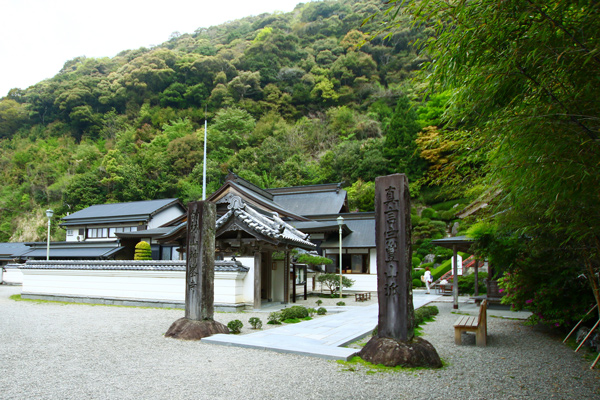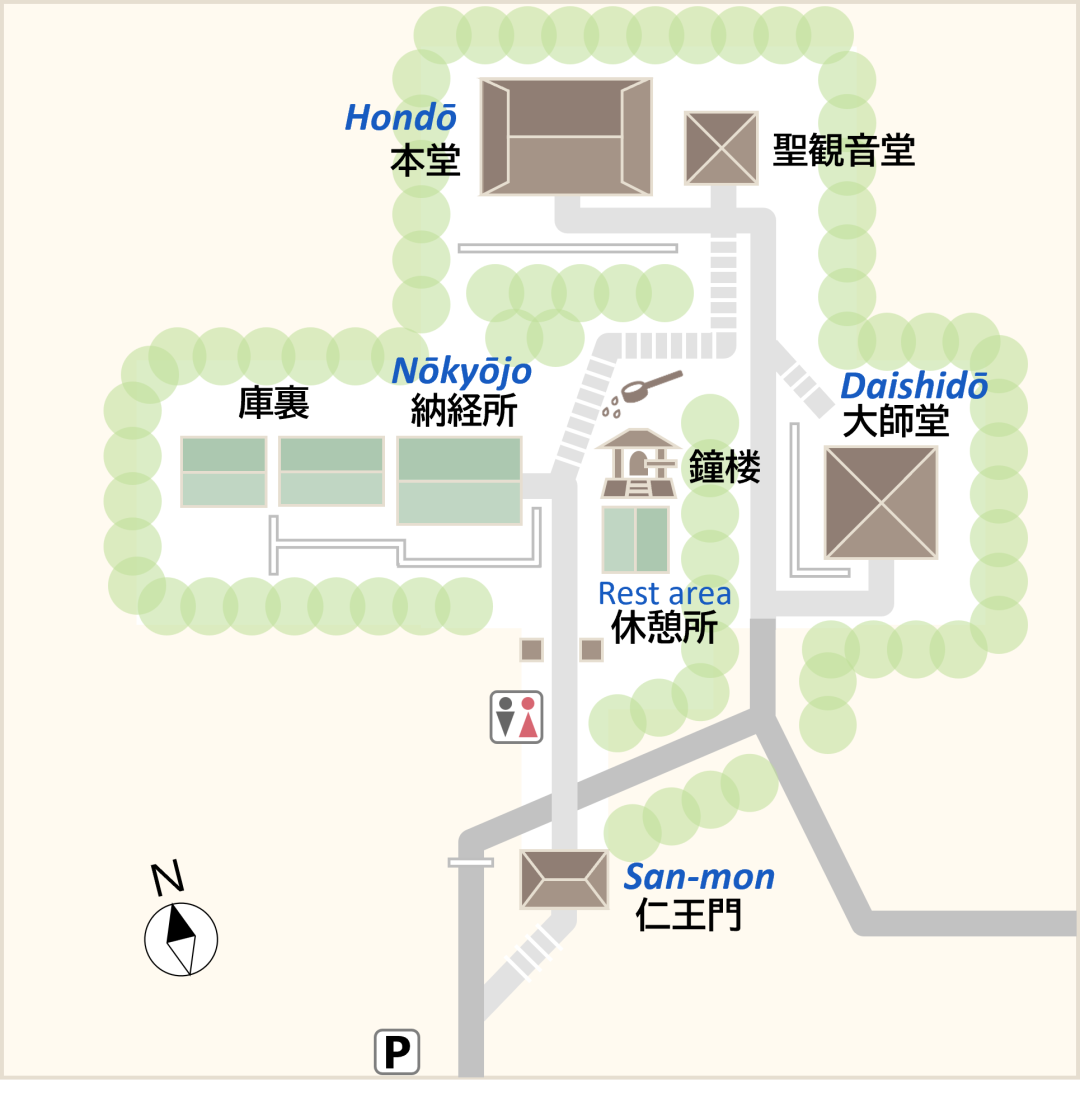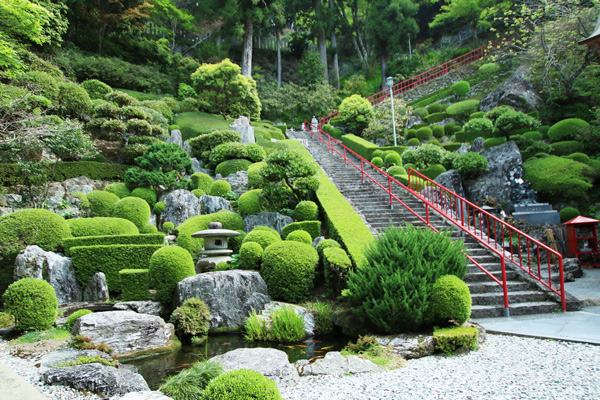The Shikoku Pilgrimage Temple Guide
Temple 27, Kōnomineji

Precinct map

History of the temple
Kōnomineji is located at an elevation of 450 meters on the side of Mt. Komineyama. It is well known that at the end of the Edo period (roughly 1853-1869), the mother of Iwasaki Yataro, who founded the Mitsubishi Zaibatsu, went to the temple for 21 days, a round trip of 20 km each day, to pray for her son's success. The history of this temple is one of the longest of the Shikoku Pilgrimage temples. According to legend, it was built as a shrine by the order of Empress Jingu (reigned 201-269) to enshrine Amaterasu Omikami (a Shinto Goddess) and other deities. In 730 Gyoki, acting under the orders of Emperor Shomu (reigned 724-749), carved a statue of Juichimen Kannon Bosatsu (Eleven-faced Bodhisattva Who Hears the Sounds of the World) and made it the principal image, thus initiating the syncretization of Shintoism and Buddhism. In 809 Kobo Daishi built a temple complex and named it Kannondo.
In the early Meiji era (1868-1912), due to the edicts ordering the separation of Shinto and Buddhism, the temple was abandoned and only the Konomine Shrine remained. The principal image of the temple was entrusted to Temple 26, Kongōchōji, and sadly, for a time, the temple remained closed. In the middle of the Meiji era, a hall was built on the former site, the principal image was returned, and the sacred site was restored. However, since the temple lacked jikaku (temple rank given by the government), its status remained tenuous.
In the 1950s and 1960s, Shizu, the wife of a man from Aichi Prefecture named Mizutani Shigeharu, suffered from a severe spinal cord disease and her case was abandoned by the university hospital. However, the couple had a spiritual experience at this peak, and Shizu miraculously recovered.
Highlights
View along the stone staircase
On both sides of the stone steps, a beautifully landscaped Japanese garden blooms with seasonal flowers. Japanese bush warblers sing in the garden during plum blossom season.
Iwa Shimizu (stone water)
There is a spring called Iwa Shimizu behind the bell tower. The water is said to be able to cure illnesses, and it also quenches the thirst of pilgrims.

Annual Events
| January 18 | Hatsueshiki Kannon Goma Hoyo (Goma Fire Ritual) |
| August 9 | Taisai Kannon Goma Hoyo (Goma Fire Ritual) |
Details
Names: Chikurinzan. Jizōin. Kōnomineji
Denomination: Shingon sect, Buzan school
Principal image: Juichimen Kannon Bosatsu
Founder: Gyoki
Founded: 730
Access
Address: 2594, Tonohama, Yasuda-cho, Aki District, Kochi 781-6422
Phone: 0887-38-5495
Parking: 30 cars (all day/fee changed)
Lodging: None
Official website: None
Instagram: konomineji27
